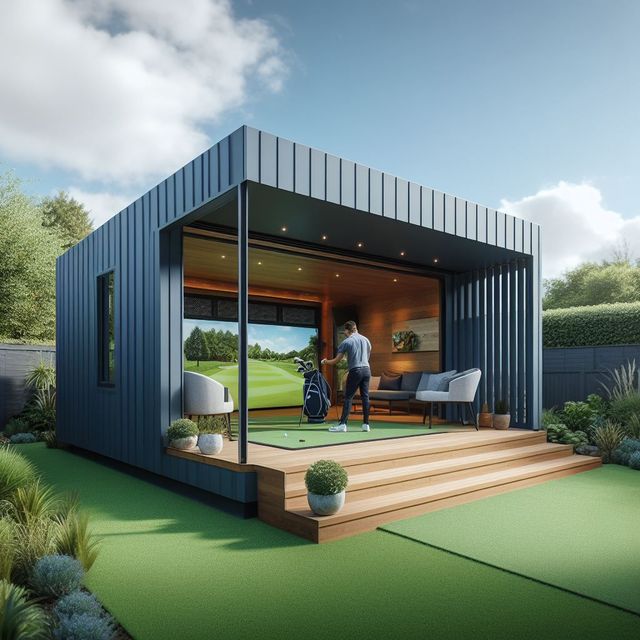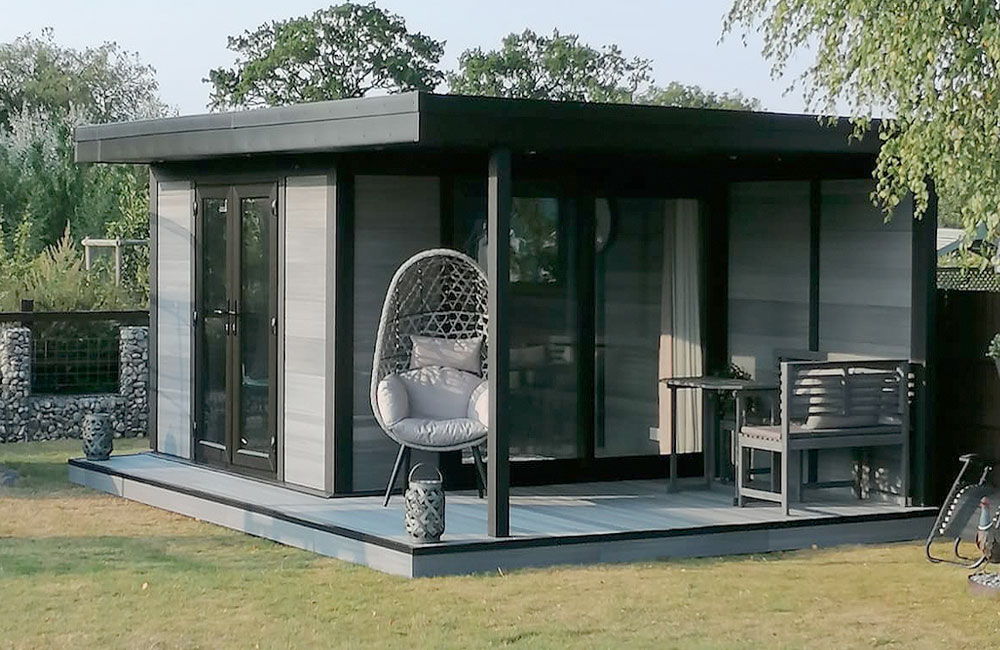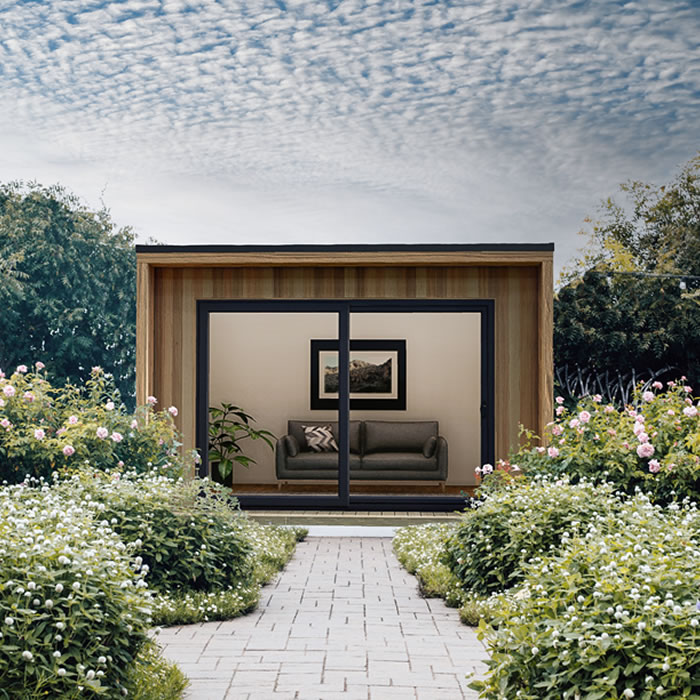Top Advice For Planning Permission On Garden Rooms
Top Advice For Planning Permission On Garden Rooms
Blog Article
What Planning Permits Are Needed For Garden Rooms, Etc. In Terms Of Changes Of Use?
In the case of building garden rooms, conservatories, outhouses, extension or garden offices the notion of "change of use" plays an important role in determining if permission for planning is needed. The planning permission is needed for changes in the use.
A planning permit is required when you're converting a non-residential space (like an agricultural garage or building) into an office in the garden or living area. This is because it involves an alteration in the usage class of the structure.
Garden Rooms are Living Spaces:
A change in use occurs when a gardenroom is utilized as a separate dwelling (e.g. an apartment or rental unit). It is required to get planning permission in order to make sure that the building conforms to the requirements of residential living.
Business Use
You may need planning permission if you plan to use a garden room or conservatory for business purposes, such as an office space or place of business with frequent visitors or employees. This is because of potential effects on the neighborhood such as traffic, sound, and parking.
Utilization in the classroom or in the Community:
Planning permission is needed to transform the garden structure into an area for education or for community (such as a room for meetings or a classroom). The local authorities will consider the viability of the site as well as the impact on the surrounding area.
The impact on local infrastructure
Planning permission will be required for any change in use that will have a major impact on the infrastructure in the local area. Local planning authorities will evaluate these impacts as part the application process.
Dual Use
Planning permission is required for properties with a mixed-use (part residential, part commercial) to establish and define the various uses of the property.
Increased footfall, traffic and revenue
If the proposed change in usage is likely to increase the amount of traffic or footfall (e.g. the conversion of a garden room into a small retail space), planning permission is required to address any potential impact on the local region.
Building Regulations Conform:
It is vital to keep in mind that while a change in usage is not required to obtain the approval of a permission to plan, it should remain in line with all laws and codes for building. They are essential for the safety of people and their health as well as energy efficiency. This is especially relevant for conversions to habitable spaces.
Environmental Impact:
Planning permission is required for changes in development that may impact the environmental. For instance, converting an agricultural field into residential space. The application may require an environmental assessment.
Community and Amenity Effect
One of the most important aspects to consider is the impact of the project on the local population and its culture. As an example, converting an old garden into a cafe requires permission from the city council to ensure it is compatible with the community's plans and safeguards local amenities.
The following regions are classified as follows:
In areas designated like National Parks, conservation areas or Areas of Outstanding Natural Beauty(AONB) the use of land is subject to more strict restrictions in order to protect the look and feel of the place. In these cases it is necessary to obtain planning permission.
Local Planning Policies
Local planning authorities can have policies that are different regarding the use of land. It is important to read these policies to understand the requirements for changes and what criteria need to be fulfilled.
In essence Planning permission is usually required for any major modification to the use of a garden room conservatory, outhouse, garden office or extension. This ensures that the proposed use is appropriate to the site, is compatible with the local, national and environmental planning guidelines and is able to take into consideration potential impacts. Consult with your local planning authority at the beginning of the planning process is vital to establish the precise requirements and to obtain the necessary approvals. Take a look at the recommended slatted cladding garden room for blog recommendations including how to lay decking on soil, costco outbuildings, garden rooms near me, outhouse, garden room or extension, outhouse garden, myouthouse, garden room planning permission, what is a garden room, garden office hertfordshire and more.
What Height Restrictions Are You Required To Follow When Designing The Layout Of Your Garden?
Certain height restrictions will determine whether planning permission is required for garden rooms, conservatories or outhouses. Here are some important height criteria that you should be aware of.
The maximum height that can be allowed for an unattached outbuilding (or extension) with a dual-pitched roofing system (such as the Gable roof) is 4 meters.
Other types of roofs (flat, one-pitched, etc.) have maximum heights that do not exceed 3 metres. For any other type (flat or single pitched etc. ), the maximum height should not exceed three meters.
Closeness to boundaries:
If the structure is located within 2 meters of the property boundary, the maximum height must not exceed 2.5 meters. This applies to garages, sheds as well as similar structures.
Eaves Height:
The maximum eaves-height (the height at the lowest point of a roof) for any structure must not be more than 2,5 meters.
Conservatories and Extensions
Height of rear extensions with one story must not exceed four meters. This is inclusive of the parapet wall and roof.
Side Extensions:
The side extensions can only be 4 meters tall and cannot be wider than half of the house.
Special Roofs
Structures with flat roofs are generally restricted to a maximum of 3 metres.
Additional Restrictions in Designated Areas:
In conservation zones, Areas of Outstanding Natural Beauty (AONB), and other designated areas, tighter height restrictions may apply and planning permits may be required for structures that otherwise be subject to permitted development rights.
Constructions in National Parks
National Parks structures may also be subject to additional height restrictions which require planning permission.
Roof Design
It is important to consider the height of the tallest part (excluding chimneys and antennas). The height of the roof should be taken into consideration. Planning permission is required if the high point is greater than the allowed development limit.
The impact on neighbours:
Even if an object falls within the permitted height limit the planning permit may be required if the impact on neighboring properties' privacy views, sunlight or privacy is significant.
Maximum Overall Height
The maximum height of a building must not exceed four meters. In this case, the highest point of a garden-office that has a dual pitched roof should not be more than 4 meters.
Decking or Platforms:
To prevent the requirement for approval for planning, platforms or decks connected to the structure must not raise the level of ground by more than 0.3 meters.
Check with your local authority about the latest modifications and regulations. Even if your plan falls within the rights to development permitted by general law, local variations and conditions may require planning permission. See the recommended herts garden rooms st albans for blog info including Tring garden rooms, outhouse building, what size garden room without planning permission, out house, what is a garden room, outhouses for garden, garden outhouses, what size garden room without planning permission, garden rooms brookmans park, costco outhouse and more.
What Planning Permissions Are Required For Garden Rooms, Etc. With Regard To Appearance And Design?
If you are contemplating building a outdoor spaces, garden rooms, conservatories, office or extension, the appearance and design will be the primary factor in determining whether you need planning permission. Here are the key considerations: Compliance with Permitted Development Rights:
Planning permission may not even be needed if the structure proposed is within your permitted development rights. But, certain requirements are required in terms of appearance and design.
Size and Scale
The scale and size of the new building must be in proportion with the structure in place and adjacent buildings. The structures that are larger than the limitations outlined in permitted developments rights require approval for planning.
Height and Mass:
The height, massing and dimensions of a new structure must be in line with the property around it as well as existing structures. Planning permission is generally required for structures that exceed the height limit or are out of scale to the size of the property.
Materials and finishes
The finishes and materials chosen must complement the property and the buildings around it. It is possible that planning permission will be required if proposed materials are not in keeping with the local style or character.
Design Harmony
The new design should be harmonious with the existing structures and the property around it. Planning permission is required when the design proposed isn't in accordance with the local character and appearance.
Roof Design
The roof's design should be in harmony with the structure of the building you're working on and the buildings around it. If the design proposed for the roof is not in character with the surrounding area Planning permission could be needed.
Fenestration (Windows and Doors):
The design and layout of doors and windows should be harmonious with the surroundings. Planning permission could be required when the proposed fenestration is not in keeping with the local character and appearance.
Facade Treatment
The facade's treatment should be consistent with the existing property and buildings around it. Planning permission might be required when the proposed treatment of the facade is not in keeping with the local culture and appearance.
Landscaping and Surroundings
The landscaping of the new structure must be in line with the existing structures and property. If the landscaping doesn't match the local look and character, planning permission may be needed.
Visual Impact
The visual impact of the structure on the area surrounding it should be minimized. The proposed structure may require approval for planning if it creates a negative aesthetic impact on its surroundings.
Heritage and Conservation Areas
If the property is in a heritage or conservation zone, more stringent standards for appearance and design may apply. If any new structures do not meet the above criteria an application for planning permission may be required.
Architecture and Planning Guidelines
Local planning authorities have often set out specific guidelines for design and appearance that must be followed. Planning permission could be required if a proposed structure is not in accordance to these standards.
In the end, the style and appearance of a structure can determine whether or not the planning permit is granted. It's essential to consult with the local planning authority at the beginning of the process of planning to ensure that the structure is in accordance with local characteristics and aesthetic guidelines, and to determine whether the planning permission is needed. Have a look at the top main electric cable to house uk for website tips including herts garden rooms, garden rooms, garden room permitted development, garden rooms hertfordshire, garden room vs extension, my outhouse, garden rooms, Tring garden rooms, insulated garden rooms, garden room heater and more.